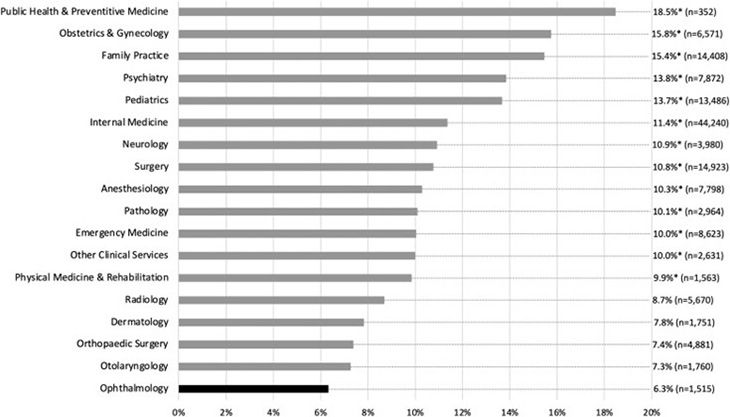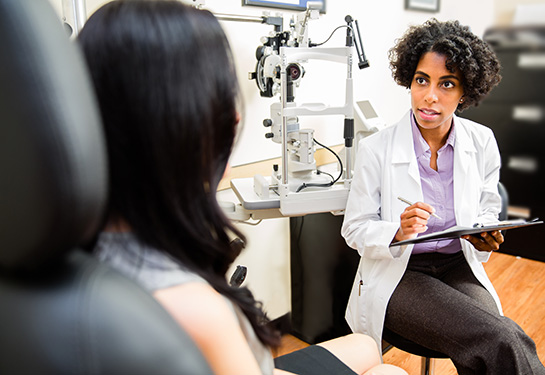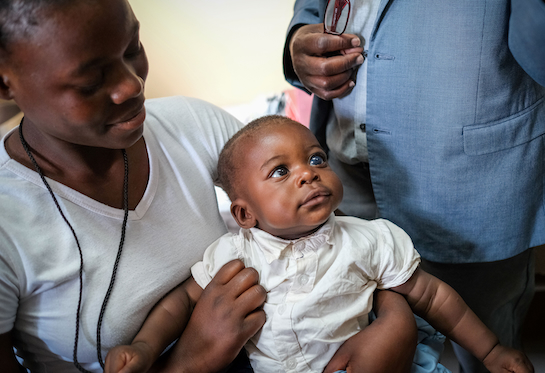US ophthalmology residency programs rank last for diversity, according to new study
Researchers say more needs to be done for the field to reflect ethnic and racial diversity across the country
A UC Davis Health study on the racial and ethnic composition of residency programs in the United States found ophthalmology programs rank last in underrepresented minority group recruitment compared to other specialties. “Trends in Racial Diversity among United States Ophthalmology Residents,” was published in Ophthalmology.
“We know from previous research that a diverse physician workforce that reflects our patient population can lead to decreased health care disparities, enhanced access to care, and improved patient outcomes and satisfaction,” said Parisa Emami-Naeini, senior author of the study. Emami-Naeini is an assistant professor at the UC Davis Department of Ophthalmology and Vision Science. “Our study shows the field of ophthalmology does not reflect our country’s diversity.”
Underrepresented minority groups are defined as racial and ethnic populations in the medical field that are underrepresented relative to their numbers in the general population.
According to the study, underrepresented minorities made up about 19% of medical school attendees but only 6.3% of ophthalmology residency programs. Nationwide, underrepresented minority groups comprise only 7.2% of practicing ophthalmologists in the United States.

The researchers used the Data Resource Book published by the Accreditation Council for Graduate Medical Education. They obtained demographic data on residents in training across 18 different specialties in accredited U.S. residency programs between 2011–2012 and 2019–2020.
The team compared underrepresented minority groups in ophthalmology with those in other specialties and estimated the change in the proportion of underrepresented minority groups over time.
Ophthalmology ranked lowest for minority residents. Public Health and Preventative Medicine and Obstetrics and Gynecology had the highest percentage of underrepresented minority groups.
The researchers note that complex factors contribute to disparities among ophthalmology residents. Previous research has shown that interest in ophthalmology was low among all medical students and even lower among underrepresented minority students.
Emami-Naeini notes that most medical students are not introduced to ophthalmology until their third or fourth year of school, when they may have already made up their minds about another specialty. Other factors that may be at play include individual experience, implicit bias among decision-makers of the field, and a lack of racially diverse role models.
Abhijith Atkuru, a third-year medical student at Eastern Virginia Medical School, is first author of the study. He worked with Emami-Naeini as a recipient of the J. William Kohl, M.D. Medical Student Scholarship, which provides an award for medical students to study with ophthalmologists at the UC Davis School of Medicine.
“While researching this project, I was able to learn and recognize the disparities in the field of ophthalmology and the urgent need for action to address them,” Atkuru said. “I am interested in ophthalmology. Taking part in the Kohl summer program and working on various projects further solidified my interest in the field.”
Seeing a physician who looks like you, or speaks your language, can improve health outcomes and lessen the burden for patients. We hope we can interest more diverse students in the field of ophthalmology."—Parisa Emami-Naeini
Small but steady increase in diversity
Data from the study show a very small, but steady annual increase of 0.24% in minority resident recruitment in ophthalmology between 2011–2012 and 2019–2020.
The researchers note that since the racial and ethnic disparities in ophthalmology and medicine are due to many factors, an equally multifaceted grassroots approach will be needed to address these issues.
They recommend concerted efforts and collaboration between the medical schools and large decision-making organizations and subspecialty societies to recruit more diverse trainees.
Emami-Naeini is participating in the American Academy of Ophthalmology’s Minority Ophthalmology Mentoring pipeline program, which is helping medical students in underrepresented minority groups become competitive ophthalmology residency applicants.
“We know that representation is important. Seeing a physician who looks like you, or speaks your language, can improve health outcomes and lessen the burden for patients. We hope we can interest more diverse students in the field of ophthalmology,” Emami-Naeini said.
Monica K. Lieng, UC Davis School of Medicine, is an additional author on the study.
Resources





